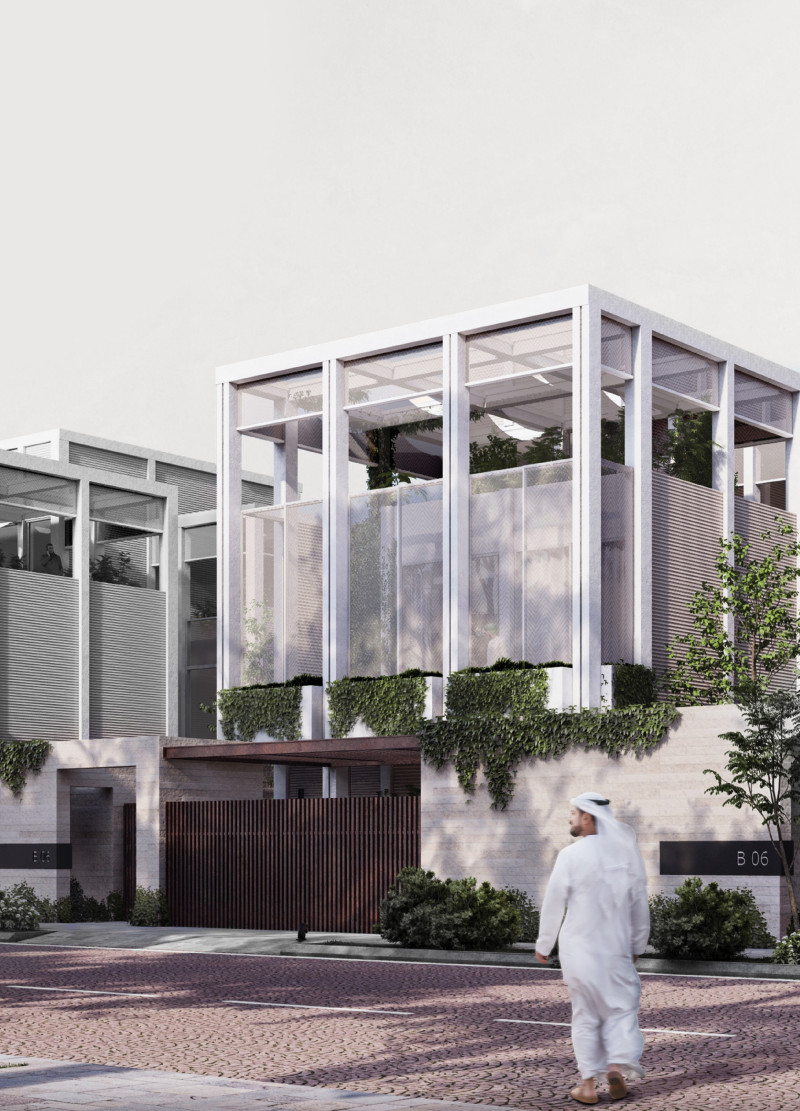5 key facts about this project
At the heart of this architectural endeavor is a comprehensive understanding of its context. The design responds to its surroundings, acknowledging the historical elements of the neighborhood while introducing contemporary elements that enhance its visual narrative. The focal point of the design is its innovative use of space, which maximizes natural light through strategically placed windows and open layouts. This design decision not only promotes an inviting atmosphere but also reduces reliance on artificial lighting, aligning with sustainable design practices.
Materiality plays a crucial role in this architecture project, where a carefully curated palette elevates the overall design. The use of reclaimed wood not only adds warmth but also connects the structure to its environmental ethos, promoting sustainability. Additionally, the incorporation of glass elements creates a sense of transparency, blurring the boundaries between indoor and outdoor spaces. The juxtaposition of these materials speaks to the project’s core values, prioritizing comfort while addressing environmental concerns.
In examining the architectural details, one can appreciate the project's attention to craftsmanship. Exposed structural elements showcase the integrity of the building, while custom fixtures complement the overall design aesthetic. Unique elements, such as cantilevered balconies and green terraces, invite nature into the urban fabric, enhancing not only the building’s appeal but also its functionality. Each detail is meticulously designed to serve both practical and decorative purposes, ensuring that the architecture remains user-centered.
The project is not merely a collection of walls and roofs; it represents a vision for modern living, emphasizing communal spaces that encourage interaction and connection. Shared amenities, such as landscaped courtyards and communal gathering areas, are integrated into the design, fostering a sense of belonging among residents. This approach reflects a growing trend in architecture: the shift towards designs that prioritize social engagement and communal living, an increasingly relevant consideration in today's society.
Moreover, the design demonstrates a unique approach to addressing environmental challenges, with features such as green roofs and rainwater harvesting systems incorporated into the architectural framework. This thoughtful integration not only enhances the building’s sustainability but also serves as an educational tool, promoting awareness of environmental stewardship among residents.
The architectural plans and sections of this project further illustrate the meticulous planning that went into its development. These documents reveal how the design effectively navigates the complexities of the site, addressing zoning regulations while maximizing usable space. The careful distribution of public and private areas underscores the project’s commitment to enhancing the user experience, balancing accessibility with privacy.
Architectural ideas are vividly expressed through the interplay of form and function within this design, which exemplifies the potential of contemporary architecture to challenge conventional norms. Its unique approach to integrating nature, community, and sustainability reflects deeper conversations within the architectural community regarding the role buildings play in shaping human experience.
For those captivated by effective architectural design, an exploration of the project presentation will yield even further insights. Delving into the architectural plans, sections, and various design elements provides a clearer understanding of the nuanced thought process that underpins this project. The careful construction of each aspect becomes apparent, showcasing how architectural intent is articulated through varied forms and materials. Engaging with the full array of design documentation will highlight how innovative concepts are translated into concrete reality, ultimately enriching both the architectural narrative and the lives of those who inhabit it.


 Mahmoud Mohammad Hasan M. Alsheikh,
Mahmoud Mohammad Hasan M. Alsheikh, 























